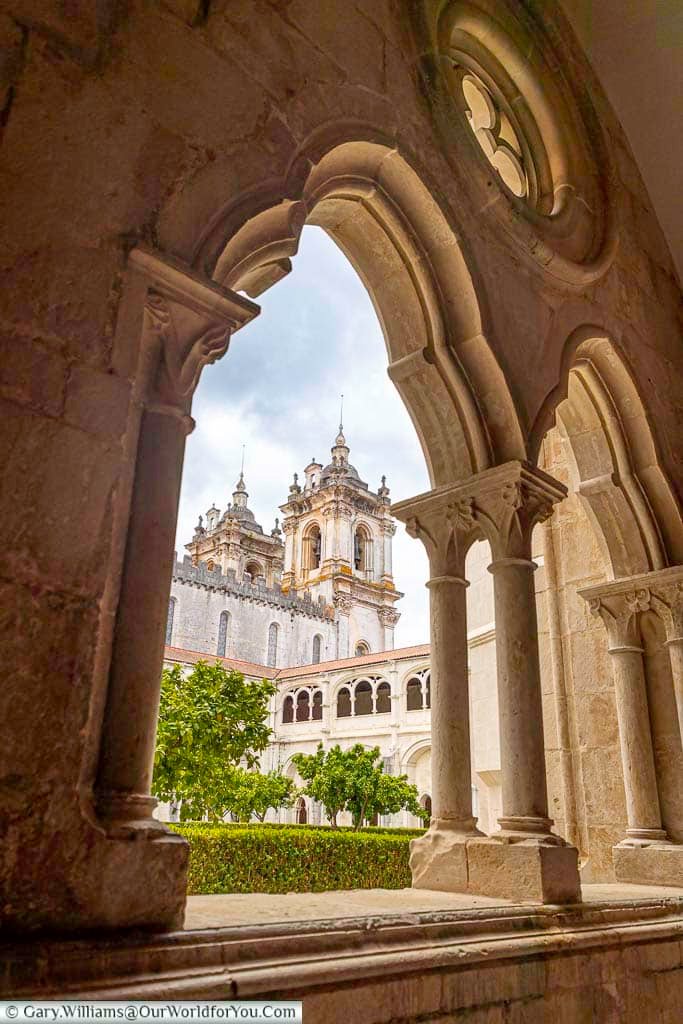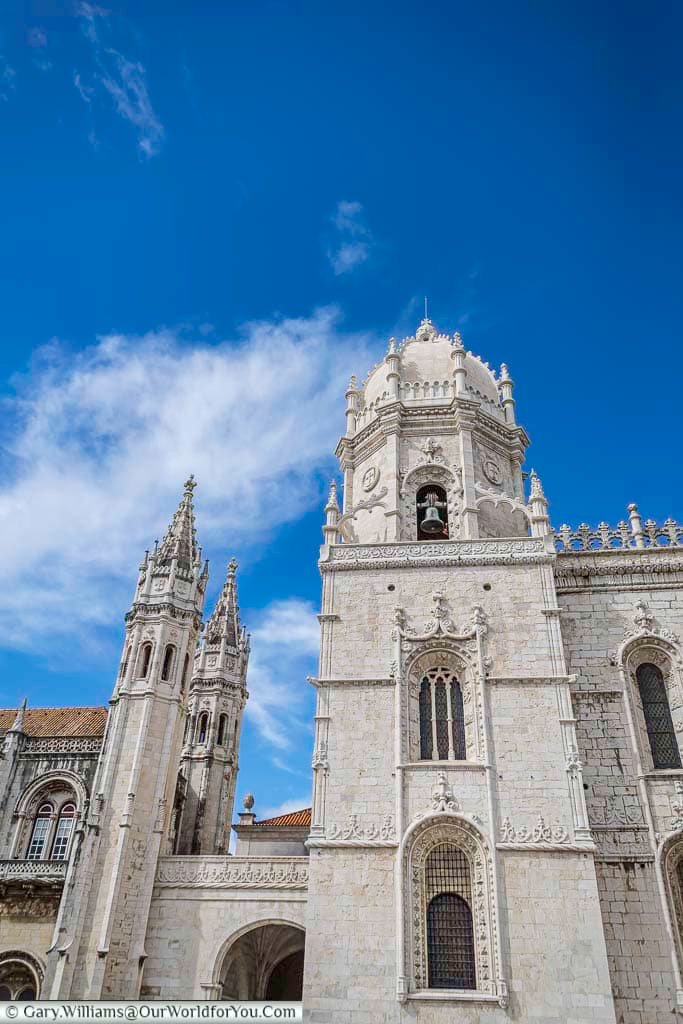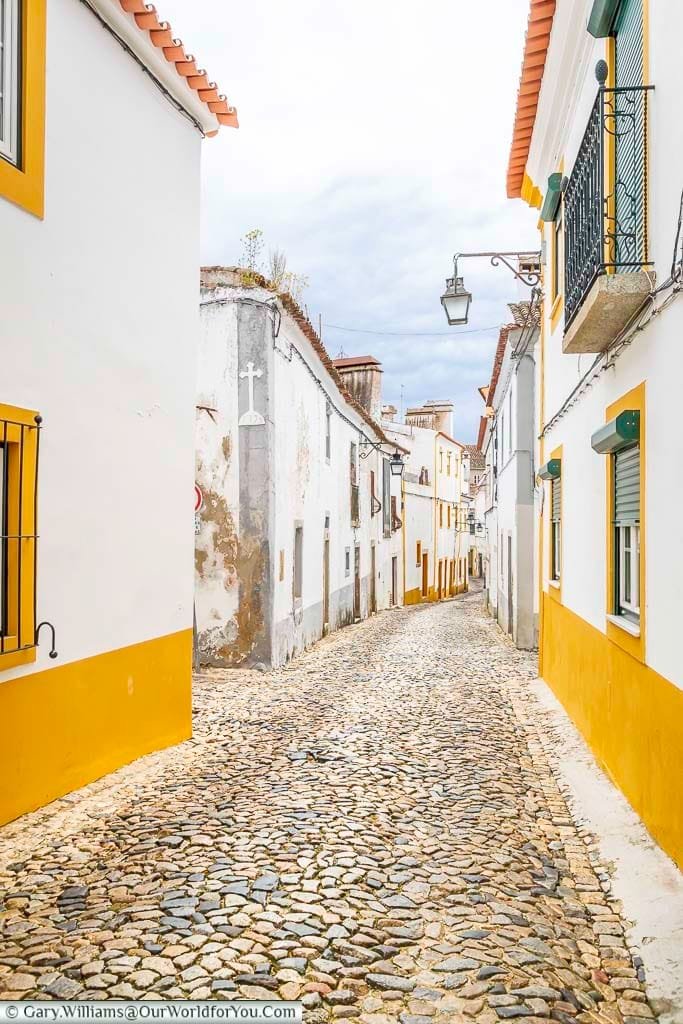Why not go and discover them all?
As you may know, Gary and I love discovering snippets of history when we travel. So, it wouldn’t surprise you that when planning our road trip around Portugal in 2018 and our mini-break to Lisbon in 2017, we wanted to visit some of Portugal’s historic sites.
Usually, there are locations in a country you immediately want to visit; however, there may also be a few towns or significant sites you may be unaware of.
Take Évora, for example. This town is incredible, and I can’t believe there is a place with a chapel of bones that had nearly passed me by.
I’m so pleased we checked out the UNESCO World Heritage Site website before we left.

Our list on UNESCO sites in Portugal
- Guimarães, Historic Centre
- Convent of Christ, Tomar
- Cultural Landscape of Sintra
- Monastery of Alcobaça
- Alto Douro Wine Region
- Monastery of the Hieronymites and Tower of Belém in Lisbon
- Monastery of Batalha
- Historic Centre of Évora
- Historic Centre of Oporto, Luiz I Bridge, and Monastery of Serra do Pilar

Guimarães was the first capital of Portugal in the 12th-century and believed to be where Portugal’s first King, Afonso Henriques, was born.
It has beautifully tiled squares and lanes and even with its many historical buildings, still has a very local feel about it.


Stay informed



Our recent new found love is Portugal, it is such a beautiful country. While planning our trip, I used the DK Eyewitness books. I find them extremely informative, easy to follow and the pictures and maps tempt you into discovering more.
We used a previous version of this book to plan our north to south Portuguese road trip, now you can grab the revised copy.
Sintra is around 18 miles (30km) from Lisbon, and like us, many people take a day trip from Portugal’s beautiful capital, as it only takes about 45 minutes by train.
The enchanting palaces that this region is so famous for are set within an extremely lush landscape. Your main decision of the day is trying to decide which palaces to visit, as you won’t be able to see them all in one day.



We also visited Quinta da Regaleira, and actually, this was our favourite; we loved discovering the caves, grottos, underground walkways and the amazing “subterranean towers”.
The gardens here felt quite magical, and you didn’t know what you were going to stumble upon next.
Plan ahead
Sintra can get very busy, and the most efficient way to get around is on the hop-on-hop-off buses, although you may have to be patient at times. I suggest picking up a bus timetable.
If time is not on your side, then jumping in a tuk-tuk is another alternative

Discovering Portugal by car
Portugal is a wonderful country to explore, from the north, south, east and west, and in our opinion a road trip is the best way.
If you're in the UK you can either follow our example, and jump aboard a Brittany Ferries ship to Northern Spain and head across to start your adventure.
Or you can fly into Portugal, check Booking.com for the best options for your flights, and then use Rental Cars to find the perfect car for your needs.
Then, if you need an itinerary, we have you covered - available in two parts;



Tourist information


The meandering Douro River cuts through the steep valley, and the vineyards are laid out like a patchwork quilt. Once your trusty steed is parked up for the evening, you can then indulge in the local tipple.
The Alto Douro Wine Region was added to the UNESCO World Heritage list in 2001.
Finding the right accommodation in Portugal
Visiting Lisbon on a mini-break was our first taste of Portugal, and from then, we were hooked. We wanted to discover more of the country, and that’s what spurred us on to embark on our north-to-south road trip.
Just a short hop from the centre of Lisbon is Belém where you’ll find the Monastery of the Hieronymites and the Tower. Oh, and also the Pastel de Nata (although not quite a UNESCO site, yet). The monastery and tower were added to the UNESCO World Heritage List in 1983.







What was also quite touching in the Monastery of Batalha, was the vigil by two sentries, standing guard over the Tombs of the Unknown Soldiers from WWI and the flickering of the Eternal Flame.
The Monastery of Batalha was inscribed onto the UNESCO World Heritage list in 1983.



The town squares here are also a delightful place to sit and watch the world go by. The Historic Centre of Évora has been on the UNESCO World Heritage List since 1986.
For more check out our post - 'Évora, Portugal’s hidden gem'
Well, have I left the best until last?
The city of Porto is fantastic, full of rustic charm, incredible architecture, and friendly people. I know Porto is hilly; however, the best way to discover it, is on foot and you can even grab a glass of Port at the end of the day.



* This post may contain links to affiliated sites where we earn a small commission at no additional charge to you.











